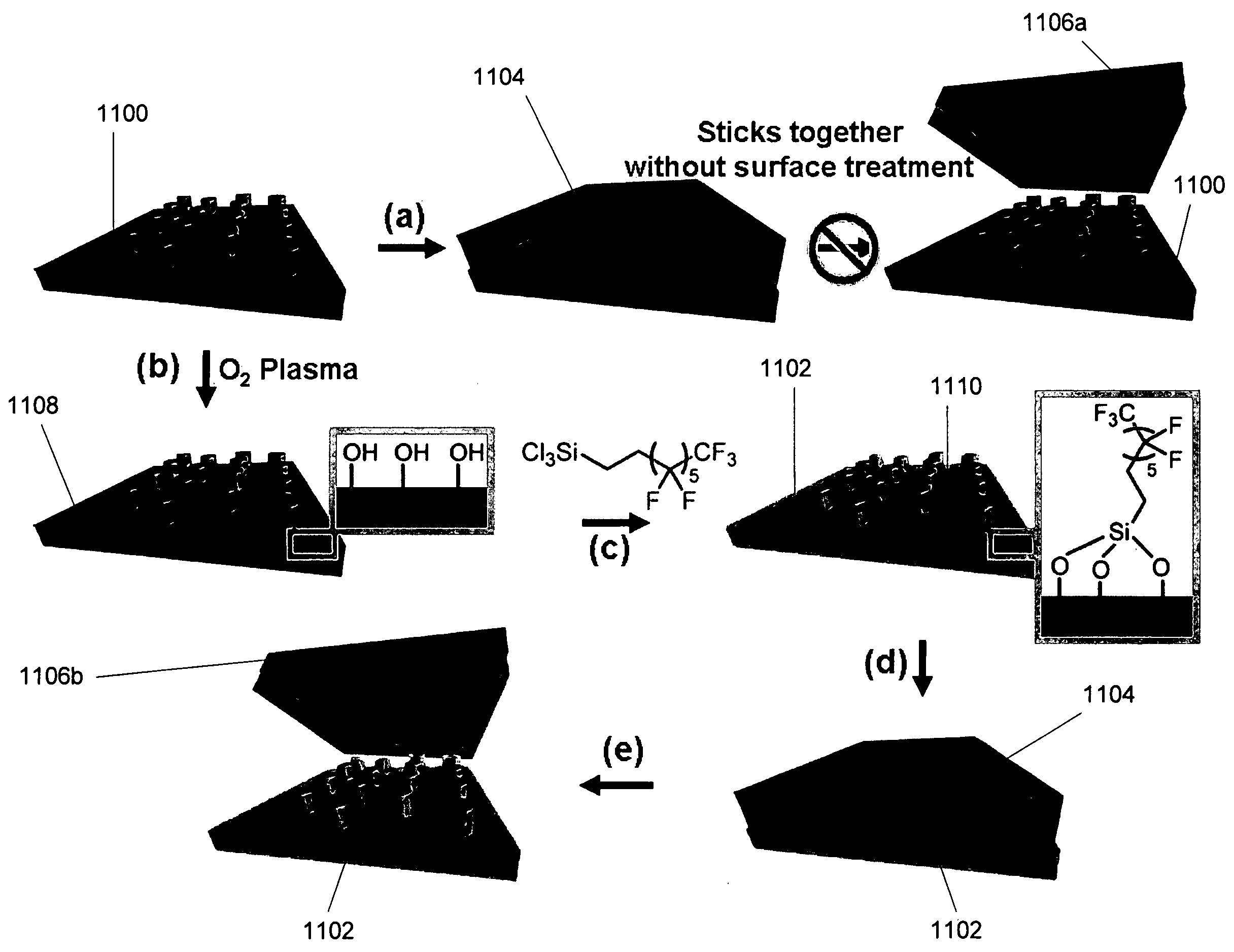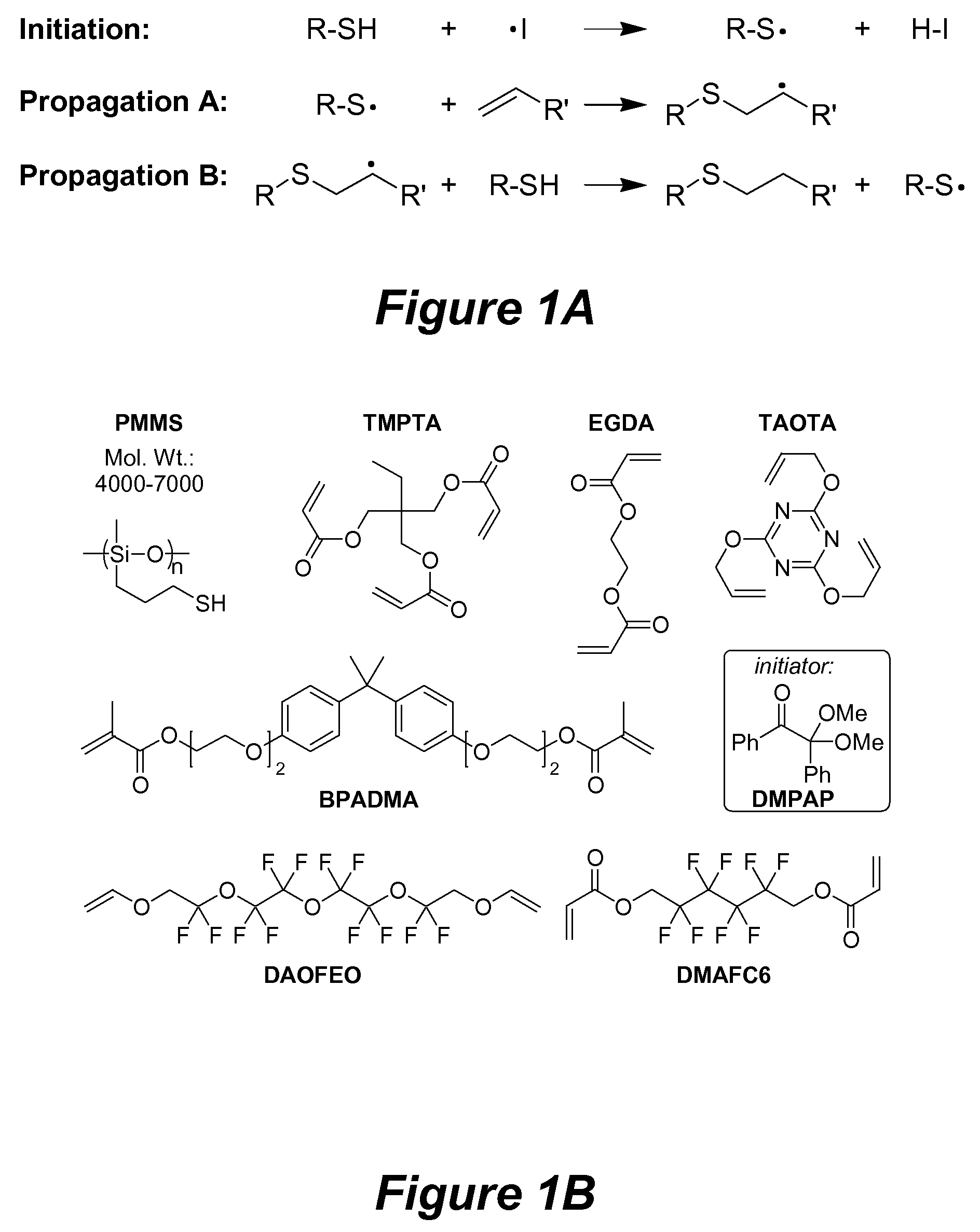Thiol-ene based poly(alkylsiloxane) materials
a technology of alkylsiloxane and thiol-ene, which is applied in the field of patterned thiolene polymers, can solve the problems of limited number of reliable materials for soft lithography or imprints, low ym value, and brittleness of materials, etc., and achieves low ym value, easy to make, and easy to tune the physical properties of stamps.
- Summary
- Abstract
- Description
- Claims
- Application Information
AI Technical Summary
Benefits of technology
Problems solved by technology
Method used
Image
Examples
Embodiment Construction
[0036]In the following description of the preferred embodiment, reference is made to the accompanying drawings which form a part hereof, and in which is shown by way of illustration a specific embodiment in which the invention may be practiced. It is to be understood that other embodiments may be utilized and structural changes may be made without departing from the scope of the present invention.
[0037]Technical Description
[0038]In a radical approach, the present invention seeks to optimize not only the physical properties of PDMS-based stamp materials, but also the process by which they are made. It is of utmost importance to develop materials that can be easily blended to yield high fidelity composites in a fast and reliable fashion with viable means of tuning their bulk properties. Thus, the present invention allows the user to manufacture multiple stamps in a short period of time (within minutes), for parallel printing over large areas, and at very low cost. In this regard, thio...
PUM
| Property | Measurement | Unit |
|---|---|---|
| temperatures | aaaaa | aaaaa |
| wavelengths | aaaaa | aaaaa |
| aspect ratios | aaaaa | aaaaa |
Abstract
Description
Claims
Application Information
 Login to View More
Login to View More - R&D
- Intellectual Property
- Life Sciences
- Materials
- Tech Scout
- Unparalleled Data Quality
- Higher Quality Content
- 60% Fewer Hallucinations
Browse by: Latest US Patents, China's latest patents, Technical Efficacy Thesaurus, Application Domain, Technology Topic, Popular Technical Reports.
© 2025 PatSnap. All rights reserved.Legal|Privacy policy|Modern Slavery Act Transparency Statement|Sitemap|About US| Contact US: help@patsnap.com



